To most classic motorcycle enthusiasts, Husqvarna has always been regarded as a Swedish dirt bike brand with a stellar reputation forged by the successes of its motocross racers in the 1960s and 1970s.
Rolf Tibblin delivered the marque’s first World Championship when he won the 250cc title in 1959. Fellow Swede, Bill Nilsson followed that up when he took the 500cc honours a season later. Tibblin was a title-winner again in 1962 and 1963 when he topped the 500cc standings, plus a new name appeared at the head of the 250cc class with Torsten Hallman winning in both of those seasons to make it a double domination of the motocross scene for Husqvarna.
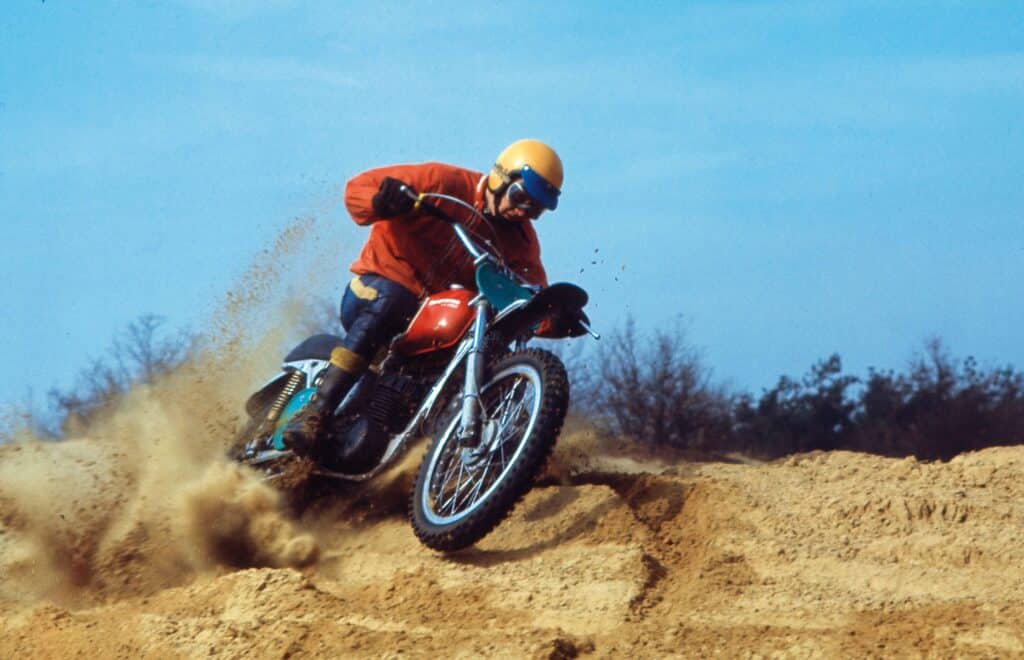
Torsten Hallman in California desert action with the 1970 Husqvarna motocross racer
Hallman also introduced the marque to the USA when he rode one in the 1967 Hopetown Grand Prix, California’s premier off-road race. He left the top US riders almost a lap in arrears thanks to the performance and handling of the nimble ‘Husky’ compared to the heavyweight British bikes then favoured by the locals.
Not surprisingly, Husqvarna’s US sales rocketed upwards with two star customers being Steve McQueen and Dennis Hopper. Off-road riding in the California desert was popular with many big Hollywood names back then and McQueen raced out there regularly under the pseudonym of “Harvey Mushman”. He and his Husky were the stars of the seminal motorcycle movie “On Any Sunday” in 1970 and after his death, the bike was sold at a 2018 Bonhams auction for $230,000 dollars!
Hallman was back at the head of the 250cc standings in both 1966 and 1967 and then came 500cc Championship wins in 1969 and 1970 for another Swedish star, Bengt Aberg. All of these victories were hard-fought in the face of opposition from British bikes from BSA and Greeves and both Jawa and CZ from Czechoslovakia. Things got even tougher for the Swedish brand in the early ‘70s when the Japanese factories got involved in GP motocross competition and titles went to riders from both Suzuki and Yamaha.
Husqvarna racers were always in the hunt, however, and did come back with another Championship in 1974 when the hard-riding Finn, Heikki Mikkola topped the 500cc table. He followed that up with the 250cc title two years later before defecting to Yamaha and winning the 500cc class for his new employers. That marked the end of an era for Husqvarna – the glory days of the Swedish two-strokes were over.
A dozen years later another era ended when the brand lost its Swedish connection. Its parent company, the Electrolux conglomerate (which also produced the highly regarded Husqvarna sewing machines and chain saws!) sold the naming rights for the motorcycle brand to the Cagiva group in Italy in 1987.
In later years those rights were passed on first to BMW in Germany and then to the KTM group in neighbouring Austria. Despite the brand losing its Scandinavian links and its manufacturing bouncing around Europe it still, however, retained its “Swedish” identity in the minds of most enthusiasts, especially those who remembered the World Championship successes from previous decades. For them, the brand would always be Swedish and always synonymous with those off-road machines using single-cylinder two-stroke engines.
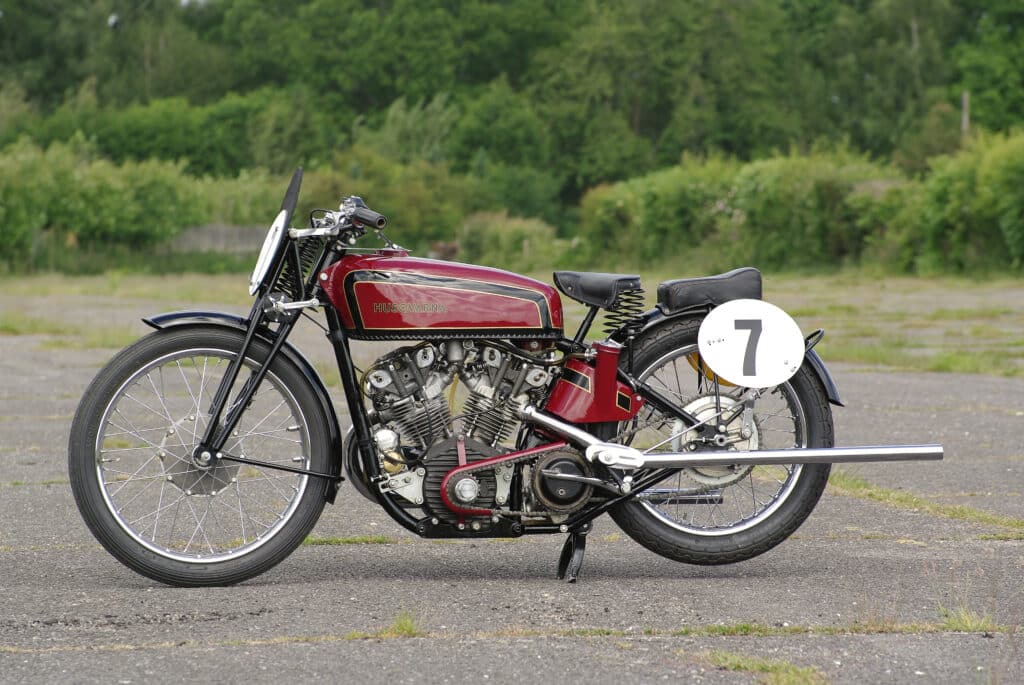
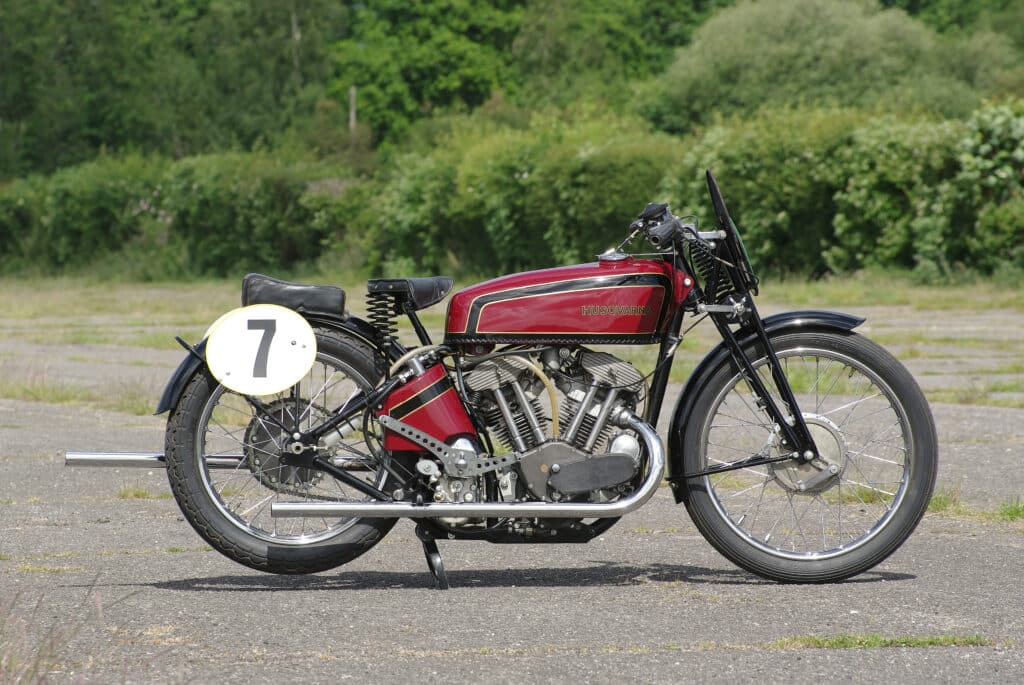
But that wasn’t always the case. Way back in the 1930s, Husqvarna actually competed very successfully at the highest level in Grand Prix road racing with 500cc and 350cc bikes powered by its own leading-edge 50º V-twin four-stroke engine.
Sweden is not a country normally associated with the manufacture of exotic road race hardware, but between 1931 and 1935 Husqvarna was not only the country’s largest road bike manufacturer but also built a total of nineteen 500cc V-twin works GP racers, and four 350s.
Ridden by men of the calibre of British aces Stanley Woods and Ernie Nott, and Swedish stars such as Gunnar Kalén and Ragnar Sundqvist, the Scandinavian bikes not only challenged Britain’s established Norton and Velocette teams in the quest for GP supremacy, they also broke new ground in terms of materials and engine design.
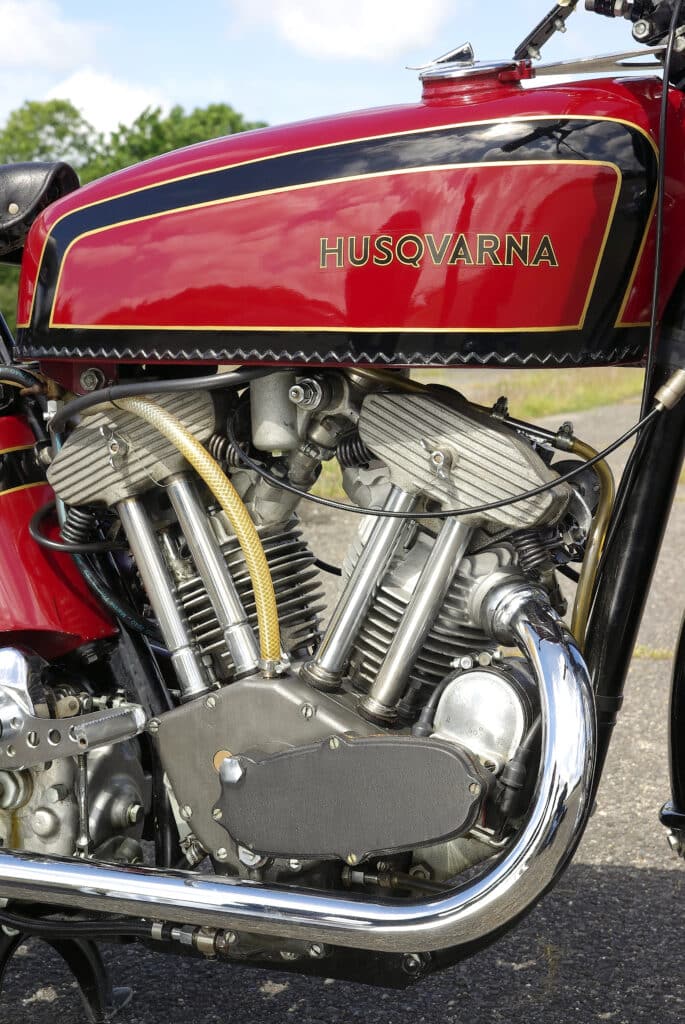
While never perhaps ultimately as successful as they deserved to be, the works V-twin Husqvarna racers nevertheless played an important role in the evolution of Grand Prix motorcycle design. They were the first twin-cylinder machines to challenge the supremacy of the British single-cylinder engines in 500cc and 350cc GP racing, thus laying the foundations of success enjoyed later in the 1930s by Moto Guzzi and BMW twins, and eventually by Italian four-cylinder bikes.
Like BSA and Royal Enfield, Husqvarna was originally a firearms manufacturer, and ironically, it was another such company, Belgium’s FN, which provided the seed for its road racing effort. This was thanks to the experience gained by a young Swedish engineer in assisting the Belgian factory with their World Land Speed record attempts on a frozen lake in his home country in 1927/28.
His name was Folke Mannerstedt, and his days with FN convinced him of the importance of several aspects of engine development which we nowadays take for granted in the pursuit of performance. Eighty years ago, however, his ideas were considered avant-garde – stuff like radical valve timing with wild cam profiles giving lots of valve opening overlap, improved breathing offered by downdraught induction, and the harnessing of exhaust resonances to improve cylinder filling, and combustion.
Mannerstedt was also a fanatic for ‘adding lightness’. A pioneer in the extensive use of magnesium and light alloy, he was able to reduce the dry weight of his bikes from 177kg for his prototype 500 V-twin first raced in 1931, to a remarkable 127kg for the ultimate version with which British star Stanley Woods won the Swedish GP in 1935.
Folke joined Husqvarna as chief engineer early in 1929, inheriting a 734cc overhead-valve 50-degree V-twin engine design developed mainly for sidecar use. Originally, he simply scaled this unit down to produce a 500cc version for use in that year’s International Six Days Trial. Even back then Husqvarna’s main competition activity was already off-road focussed, as it would be in future decades forty years on. Mannerstedt, however, was a speed freak, and in spite of general belt-tightening caused by the worldwide economic depression in the early nineteen-thirties, he persuaded the factory bosses to pay some attention to road racing.
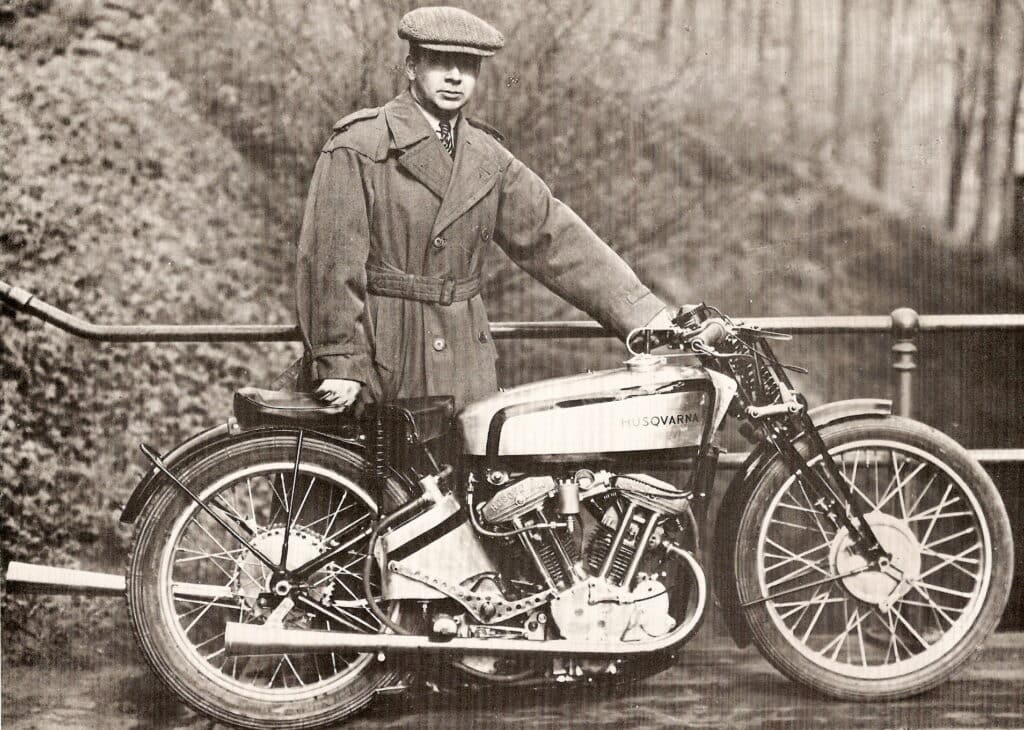
Folke Mannerstedt with his Husqvarna V-Twin racer
At first, this was with a 500GP machine based on the ISDT bike, and which factory rider Yngve Ericsson took to third place in the 1930 Swedish TT at Saxtorp. For 1931, Folke produced his own 500cc road racer which, like its predecessor, was a 50-degree V-twin design and all of the future Husqvarna GP machines were based on this design.
The V-twin first made its mark in 1932, with riders Ragnar Sundqvist and Gunnar Kalén defeating the works Norton team to place 1-2 at the Swedish TT. Further development lowered weight and increased power during the 1933 season and an ensuing run of race victories and lap records in European non-Championship international races led the Husvarna management to sanction a full-scale Grand Prix challenge in 1934. To do so, they hired British TT stars, Stanley Woods and Ernie Nott to supplement the Swedish riding team, while Mannerstedt also developed a 350cc version of the bigger V-twin.
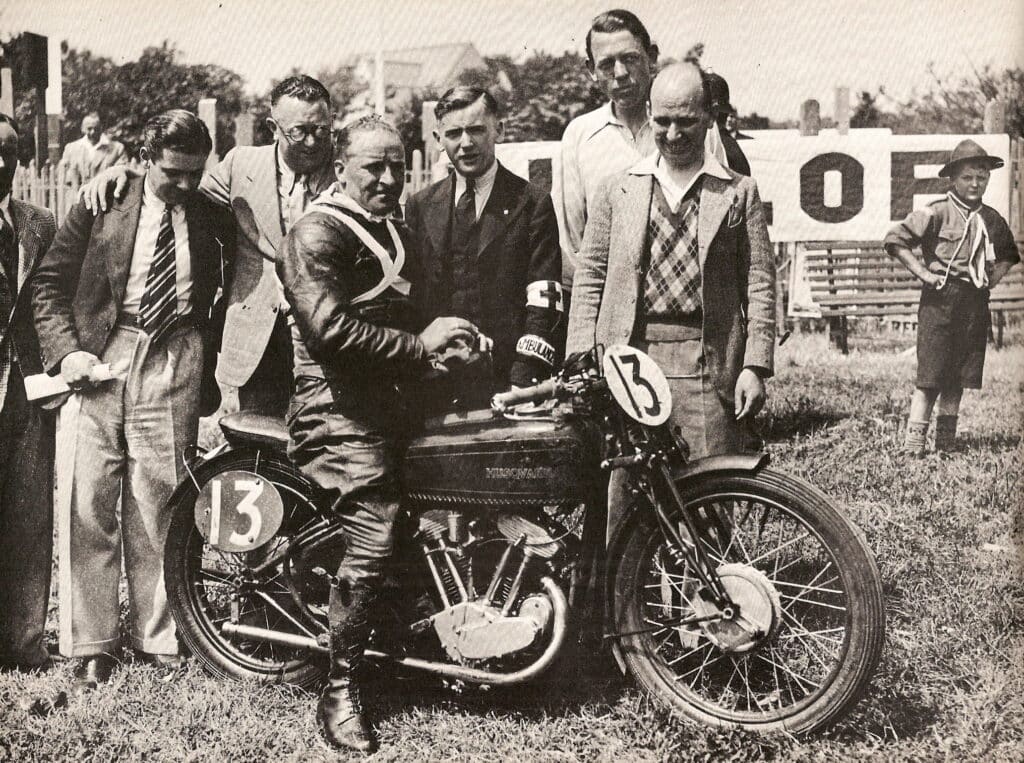
Folke Mannerstedt with his Husqvarna V-Twin racer
Nott finished third in the 350cc TT and Woods was headed for a certain second place in the 500cc race, splitting Guthrie and Simpson on the works Nortons and leading the race at various stages. Unfortunately, he then ran out of petrol on the Snaefell mountain section course only eight miles from the finish.
In 1935, a new batch of bikes was constructed, with even less weight and more speed, but before they could be raced, the company management board decided to withdraw from racing for economic reasons. A solitary works entry was made for Stanley Woods in the 500cc Swedish TT, which he duly won and, in doing so, gave Husqvarna a fourth consecutive victory in their home Grand Prix. But at the end of the season, the bikes were sold off, the factory race shop was closed and the Husqvarna road racing story was over forever.
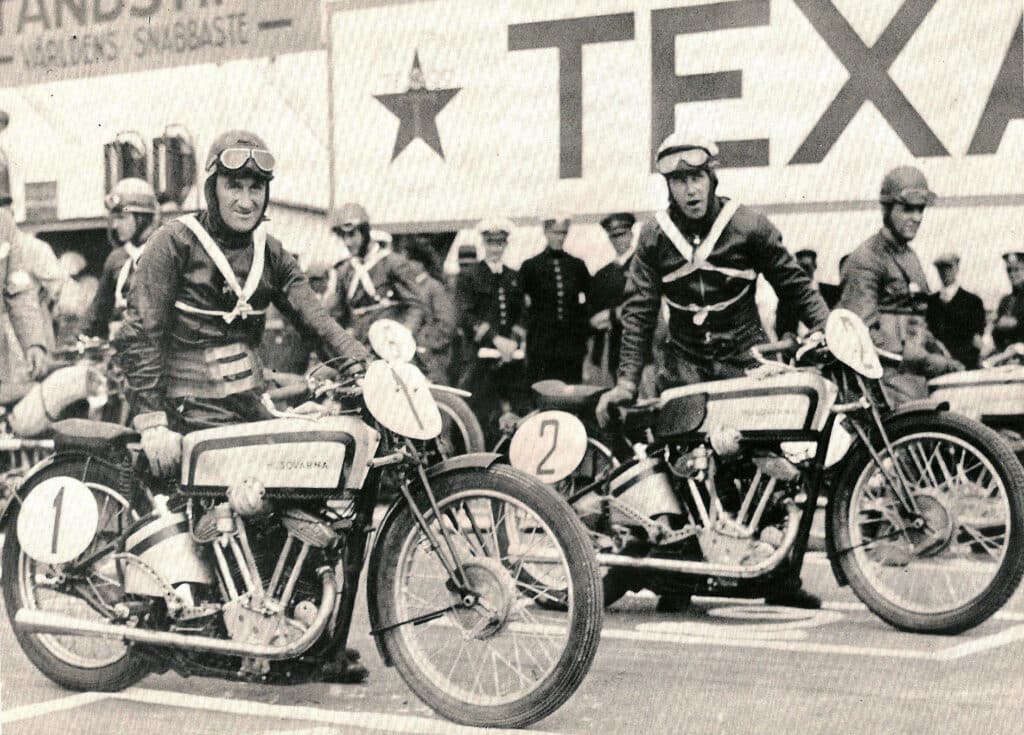
Stanley Woods (left) and Husqvarna teammate Gunnar Kalen
Today, only a handful of these rare and exotic machines remain but, fortunately for British classic bike enthusiasts, one of them is in the Sammy Miller Museum in in New Milton, Hampshire.
Photographs and information courtesy of The Motorcycle Files archive and the Husqvarna Media Centre
For the full story of the Husqvarna V-Twins we recommend the e-book The 1934 Husqvarna Vee-Twin 500cc Grand Prix Racer by Alan Cathcart in The Motorcycle Files series available exclusively from Amazon.

